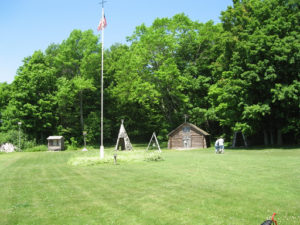Car Ferry “turtled”
Ann Arbor car ferry No. 4 sinks
in the slip Saturday evening.
Twenty-four cars wrecked
Loss will greatly exceed $100,000
The apron was also damaged.
The Ann Arbor car ferry No. 4, while being loaded at this port Saturday night turned turtle and went to the bottom of the slip, port side downward. It contained 24 cars, loaded with iron ore, in all about 1,200 tons.
The ferry, which is constructed of steel, is 270 feet over all and 52 feet beam, is in command of Capt. Fred Robertson, and Thos. Hardkins is chief engineer. The crew numbered twenty four men and Mrs. Wilson, cabin maid and her daughter, Miss Wilson, waitress.

